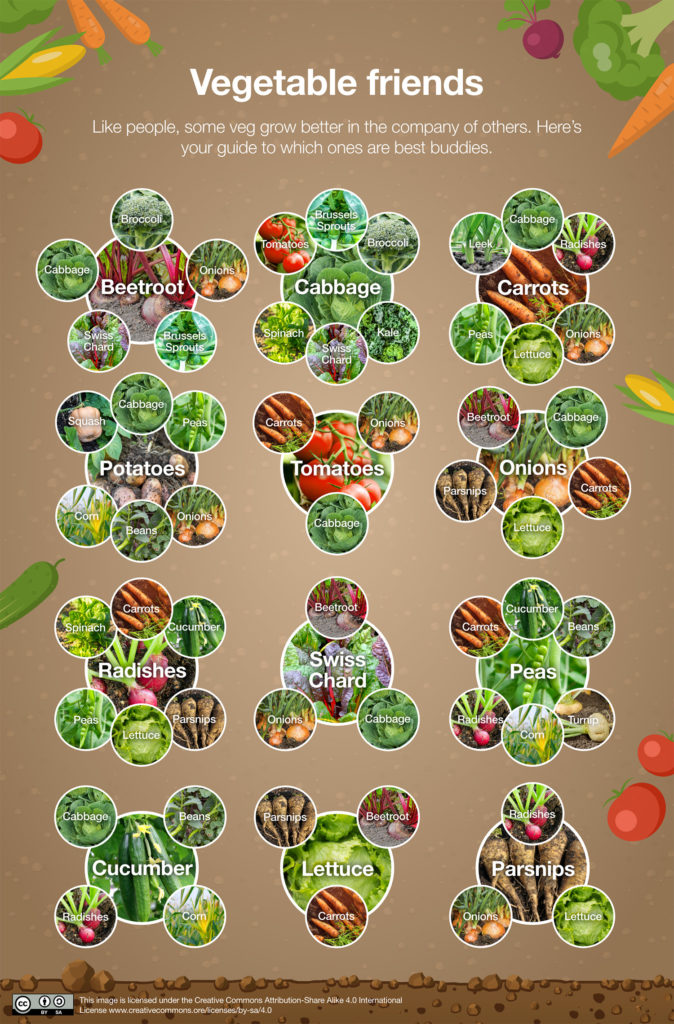
Take a look below…
North-facing
A north-facing garden will spend much of the day in large areas of shade, but don’t despair – they are also likely to get a good amount of evening sun from May through to October. All but the most heat-loving plants enjoy midday shade, which also stops pale colours burning out.
Emma from Garden Organic says “North facing gardens usually have a fair amount of shade and plants require protection from winds and frost. Sarcococca is a reliable evergreen which can be used as hedging or a standalone shrub and has a beautiful scent. Ivy is a rapid climber with wonderful autumn colour and gives good coverage on buildings, with it being self-clinging.”
If you’re looking at planting some vegetables, consider; lettuce, rocket, kale, mint, oregano, and chives as they will do well on three or four hours of sun.
South-facing
Considered the most desirable plot, south-facing garden advantages far outweigh the negative as it means you have little shade with lots of sunshine on the back of the house.
Make sure to only put the most heat-loving plants in the centre of your garden, where the shade doesn’t cast. “The Hakonechloa is a grass which provides lovely movement and year-round interest. Allium are a fabulous statement plant which fills the gap between spring and summer” says Garden Organic. However, there are some varieties of Alium to avoid including paradoxum, rosenbachianum, roseum, schoenoprasum, sphaerocephalon, subhirsutum and triquetrum.
For vegetables, try heat tolerant ones like watermelons, squash, okra, tomatoes, peppers and aubergines.
West-facing
West-facing gardens are in shade in the morning and get sun during the afternoon and evening, which is ideal for camellias. Plants in a west-facing garden or area must also be able to withstand the heat of the afternoon sun over the summer months.
“Verbena bonairiensis is a light airy plant which flowers all summer, giving height to any garden. Daphne is a spring flowering evergreen with beautifully scented flowers.” If you get six or more hours of sun, you will have a good chance of yielding tomatoes, peppers, and squash in this garden.
East-facing
East-facing gardens get mostly morning sun. Plants that like partial shade and need shelter from strong sunlight will thrive here. Afternoon shade protects plants from the sun at its hottest while evening shade will enhance the impact of white flowers that attract pollinating moths.
“East-facing can be cooler and shadier. Euphorbia characias has lime flowers which stand for an exceptionally long period and are very reliable, whilst hardy geraniums flower all summer and are easy to grow.”
This is a great area for growing carrots, beetroot and leafy greens that enjoy some sun, but are sensitive to the hot afternoon rays. And with at least six hours of sun, you will be able to get some peppers and tomatoes growing in this area.
Companion planting
It can be difficult to know where to plant vegetables in your garden, and what plants work best when put together – this is where companion planting comes in. It is essentially a method of growing two or more different plants together for the beneficial effect they have on each other. Companion planting is mainly carried out in the vegetable garden to improve the growth of plants, attract pollinating insects and control pests.
Take a look below for our guide on making the most of your garden and vegetables with companion planting:

As well as building beautiful new homes for you to live in, we’re also committed to protecting and preserving British wildlife. To enhance the biodiversity of our developments, we began a unique national partnership with the RSPB, Britain’s largest nature conservation charity, in 2014.
Together we’ve found ways to boost the wildlife value of green spaces within our developments and we look forward to welcoming nature into our communities for years to come. To discover more ways you can make your garden more wildlife friendly, download our handy guide.
Looking to inject some life into your garden? Or on the hunt for a 3 bedroom house or a 4 bedroom new build house for sale where you can plant to your heart’s content? We have developments across the country, from southern and eastern regions, including new homes in Hampshire and Hertfordshire, through to the West Midlands and all the way up to the northern regions and Scotland. Whether you’re an existing or first-time buyer, we have a range of offers to help you make your next move.
[1] Source: AXA Insurance survey 2017



